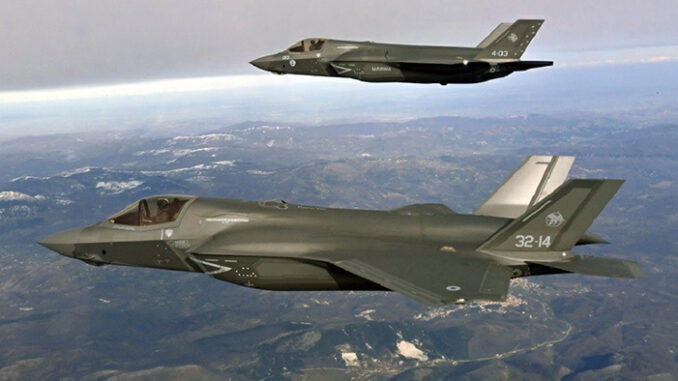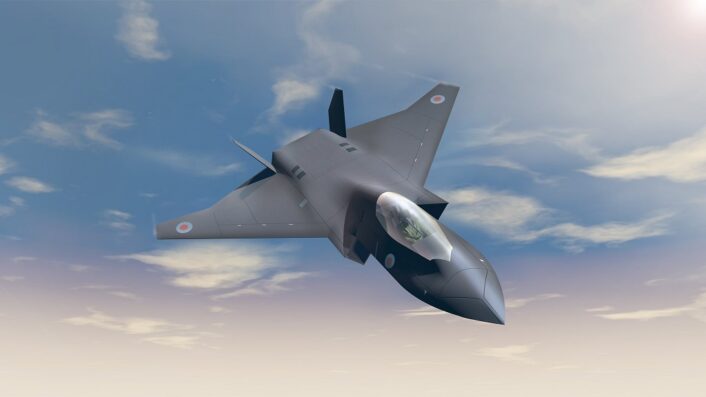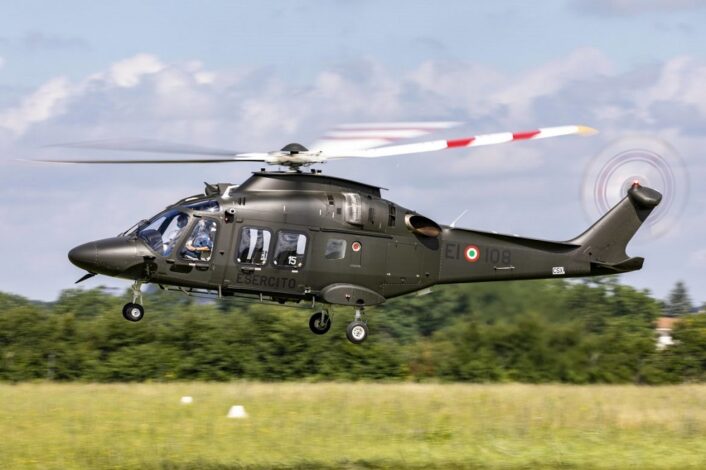[ad_1]

The Italian MoD is continuing the modernization of the military, with investments in many areas that will also sustain the national industry.
The Italian government published, during the summer, the new multiyear defense planning document (Documento Programmatico Pluriennale della Difesa) for 2022-2024, which illustrates the funding needed by the Italian military to sustain and modernize its forces. Many important investments can be found in the document, but let’s proceed in order.
The strategic situation is based, as last year, on a reference scenario, called the “extended Mediterranean” region, which is currently subject to many important geopolitical changes. Among the critical aspects of the region, the document mentions the Libyan situation, the tensions between coastal countries that are rearming their military forces, the disputes about sea boundaries and commercial routes. These challenges add up to the global situation, with COVID-19 and the new role of Russia and China becoming increasingly important.
The Italian Ministry of Defense is focused on maintaining a balanced military power, while also renovating and potentiating it with new capabilities. An important novelty in the last few years are the space and cyber domains, which are set to provide new space for innovation in the informational and decisional sectors.
The systemic shock caused by the dramatic evolution of the Russian invasion of Ukraine, whose economic and social repercussions are noticeable in an international context already burdened by the echo of the pandemic and by multiple situations of unresolved conflict, will radically change the world order and European security that we have known so far, says the document.
The invasion brought back the attention to the importance of symmetrical conflicts against near peer adversaries, after decades of asymmetrical conflict against irregular forces, revealed a significant conventional, cyber and space threat, and even evoked again the nuclear threat. The return of war in Europe, which someone thought would accentuate the disagreements among the European countries, has instead determined the effect of cementing the cohesion of NATO and of raising the role of the European Union to an organization with a geopolitical value.
This is contrary to the expectations of Russia, which believed it could count on a disunited NATO and on a weak European Union unable to decide. Also, this was an eye-opener about the need for a strengthened military, after years of postponed investments which were needed to increase its deterrent value and to respect the commitments, undertaken in the NATO context, for the achievement of the threshold of 2% of GDP for the Defense budget.
In this perspective, the Defense minister Lorenzo Guerini outlined four fundamental strategic priorities: promote an appropriate positioning of Italy in the context of international security; give further impetus to the process of adapting the military instrument; fully exploit the potential that can be expressed by the Defense Industry; continue efforts in terms of policies suitable for addressing current and future challenges.
Let’s now talk about the programs in place to reach the objectives of this year’s Defense planning.
One of the main activities for the aerospace component of the Command, Control and Communications (C3) is the completion of the acquisition of the Gulfstream G550-based CAEW/BM&C capability, as well as a new Electronic Warfare capability. The program, known as P-MMMS (Piattaforma Multi-Missione, Multi- Sensore/Multi-Mission, Multi-Sensor Platform), is aimed at obtaining a modern asset that can be integrated in a net-centric C4ISTAR architecture and later adapted for multi-domain operations.
The resulting C6ISTAR-EW-enabled assets are the CAEW, Spydr and JAMMS aircraft that have been in the works for some years. As we reported last year, a number of “clean” G550 are being acquired to be converted at a later stage, like the one delivered earlier this year. These aircraft, that the document calls “green base JAMMS”, are scheduled to be converted in the Full Mission Capable CAEW and Electronic Combat variants. A contract for the conversion of two more CAEW aircraft might have already been signed.

An interesting piece of information possibly related to the P-MMMS program can be found under the Force Protection and Engagement Capability entry, which hints at the Electronic Combat variant of the aircraft possibly being the EC-37B Compass Call. In fact, the entry says: “Completion of the acquisition program for new aircraft equipped for and dedicated to Electronic Warfare operations (EC-37B)”.
As you may know already, the Compass Call system is an airborne tactical electronic attack weapon system installed on a heavily modified version of the C-130 Hercules, called EC-130H Compass Call. This system disrupts enemy command and control communications, radars, and navigation systems and limits adversary coordination, which is essential for enemy force management. Following the type’s retirement announced in 2014, the U.S. Air Force initiated the Compass Call Rehost program, which will move the current Compass Call systems from the EC-130H to the new EC-37B, based on the Gulfstream G550 Conformal Airborne Early Warning Aircraft (CAEW) airframe.
Staying on the Electronic Warfare topic, the EC-27J JEDI (Jamming and Electronic Defense Instrumentation) fleet is being expanded to a total of three aircraft, with two new ones in the RRP2 (Risk Reduction Phase 2) configuration being converted, together with the procurement of their ground segment and mission system. As we already reported, the EC-27J is a variant of the successful Leonardo C-27J Spartan military transport aircraft that has been heavily modified to perform EW missions: the aircraft carries an internal JEDI system that is coupled with a tail antenna to jam the frequency bands used to remotely operate IEDs and UAVs, in order to neutralize them and thus protect personnel on the ground around areas of interest.
The capabilities provided by the secretive EC-27J (whose official designation is YEC-27J in accordance with Italy’s MOD Mission Design Series) are intended for the execution of convoy escort missions where it provides from the air an electromagnetic safety bubble. The aircraft was deployed to Erbil, Iraq, for “Prima Parthica” (as the Italian Armed Forces contingent supporting Operation Inherent Resolve is dubbed at national level). Interestingly, the EC-27J of the Italian Air Force is the only non-American asset flying the Electronic Support and Protection mission in support of Operation Inherent Resolve.
Speaking of the C-27J, the planning mentions the works for the completion of the MC-27J Praetorian program. The MC-27 is a special variant of the Spartan developed to provide support for the Special Forces of the Comando Operativo Forze Speciali (COFS). Three C-27J that were already in service and the ItAF were converted to the Praetorian configuration with the addition of mission systems, C3ISR equipment and a palletized ATK GAU-23 30mm automatic cannon, the same used by the USAF AC-130J.
The Defense planning also includes the Spydr, mentioning the leasing of an aircraft equipped with specialized sensors as gap filler until a dedicated asset capable of assuring a full threat detection. This entry should refer to the two King Air 350s, one of which is a mission-equipped aircraft and the other one used for training purposes, leased from L3Harris. The aircraft is expected to be replaced by Gulfstream G550 aircraft with AISREW Mission Systems whose Foreign Military Sale was approved by the U.S. State Department in 2020.
Two aircraft will be provided by Italy to be converted, with L3Harris being the company contracted to carry out the modification. The “final” shape of the Italian AISREW aircraft should be similar to the one of the Australian MC-55 Peregrine, a SIGINT-configured G550 that L3Harris is providing to the Royal Australian Air Force and developed based on the experience of the EC-37 Compass Call II and other variants. It seems likely that all the modifications will be embedded at a later stage and the first airframe will be initially used for training purposes.
Italy is also continuing its participation in the Maritime Multi Mission Aircraft (M3A) program with other NATO allies, whose aim is to procure a dedicated aircraft for long range surveillance above and belove the sea surface. The M3A is expected to create a new generation of maritime surveillance aircraft that will eventually replace older platform currently in service.
The planning then moves to the information superiority section, with its Intelligence, Surveillance & Reconnaissance capabilities enabled by Unmanned Aerial Vehicles. The first to be mentioned is the EUROMALE program, the first unmanned aerial system (UAS) designed for flight in non-segregated airspace. The airframe is a twin-turboprop with pusher-propeller engines being developed by an Airbus, Leonardo and Dassault consortium. The system is set to provide a generational leap compared to current assets, integrating open architecture, high modularity and ease of evolution.
The other programs in the ISR section are related to the continuation of the modernization, potentiation and completion of the MQ-9 fleet, all listed under the Mid Life Modernization (MLM) and operational capabilities maintenance programs. One of the focuses of these programs is the payload, with the upgrade of sensors and command and control systems to the latest standards.
The document mentions: ”The aircraft will guarantee increased levels of safety and protection in convoys escort missions, providing a flexible defense capability that can be expressed from the air. It will also introduce a new protection option aimed both at forces on the ground and for the benefit of aerial assets during high intensity operations and, ultimately, to protect civilians in the event of a hybrid threat”. This explanation, which was also in last year’s document, was said to refer to the weaponization of the MQ-9.
The weapons were explicitly mentioned in a subsequent entry: “Modernization and renewal of the RPA fleet of the MLE category, the Predator platform, related weapons and interim solutions”. Actually, the U.S. State Department already approved in 2015 a possible FMS to Italy for the weaponization of the MQ-9, but there is no follow-on info about it. The FMS package included AGM-114R2 Hellfire missiles, GBU-12 and GBU-49 laser guided bombs, GBU-38 JDAM and GBU-54 Laser JDAM bombs.
The Mid Life Modernization includes the procurement of two new MQ-9A Block 5 aircraft and a ground station, in addition to the upgrade of the other five to the same configuration. One of the new Predators (the name Reaper has not been adopted in Italy) will replace the one shot down in Libya in 2019. Also, the Italian MoD is looking for a new RPA that will replace the MQ-1C Predator A+.

While it didn’t provide any new details, this year’s document mentions again the Tempest 6th generation fighter aircraft and the wider Future Combat Air System (FCAS) program. Tempest is intended to preserve the dominance of the air combat power by capitalizing the Italian and British participation to the F-35 Joint Strike Fighter program. FCAS is described in the program summary as a system of systems, with an optionally unmanned aircraft, manned-unmanned teaming, advanced sensors and related technologies.
The UK, Italy and Sweden signed a Memorandum of Understanding in 2021 to collaborate on the project, transforming the British FCAS project in a major international endeavour. As of now, Sweden has not yet fully committed to join Tempest, but it is closely observing the process while working on the wider FCAS effort. Anyway, the three countries aspire to develop the concepts, sharing workload while maximizing their national expertise as they strive towards a common goal. The goal of the MoU is to have an equal participation of the signatory countries in the activities related to Tempest, with positive effects on each own defense industry, small and medium enterprises, research institutes and universities.
Japan is also joining the FCAS program, after a Letter of Arrangement signed earlier this year with the UK. The two countries will conduct cooperative research in fighter jet sensor technology, focusing on what has been called the “Jaguar” system. The “Jaguar” aims at the development of universal frequency sensor technology to allow aircraft to “better detect future threats from air, land and sea, quickly and accurately locating targets and denying surveillance technology operated by adversaries. Japan’s expected role in the FCAS effort has since expanded, including the JNAAM long-range air-to-air missile (which will benefit from the Meteor BVRAAM technology) and a possible merge of the indigenous F-X program with Tempest.
After the 6th gen, the document moves to the current 5th gen with the F-35 Lightning II. The MoD says the program is proceeding as planned for the first two tranches of aircraft, called Phase 1 and Phase 2a. Phase 1 satisfied the requirements for the acquisition of the first 28 aircraft, their engines, equipment, initial expenses and retrofit, together with logistical support until 2022 and the preparation of the national sites in Amendola, Ghedi and the Cavour aircraft carrier.
Now, the Phase 2a has been initiated thanks to a strategy that will avoid further delays in the program and savings which could amount up to one billion euros. This phase covers the procurement of 27 new aircraft, together with their engines and equipment, and the extension of the logistical support. This will allow for a full operational capability from 2030. Also, by the end of the year, the MoD will start the preliminary negotiation for Phase 2b, which will lead to the acquisition of a further 35 aircraft. The total expense expected until 2032 is of seven billion euros. Also, the revenues from the F-35 program on the national industries have reached, by the end of 2021, a total of € 5.17 billion.

The Defense planning moves on with the assets currently in service. The Eurofighter Typhoon program now mentions the development of next generation, advanced technology sensors to better promote the national industry in the transition towards the 6th generation. At the same time, the Tornado program is looking to the upgrade of the aircraft to solve obsolescence issues due to the aging technology and to extend the operational life until the planned phase-out date (which has not yet been officially decided).
The Italian Air Force will also work on the completion of its helicopter fleet for the Search And Rescue and Slow Mover Intercept missions. The first entry sees the completion of the acquisition of the HH-139 rescue helicopter, which is an interim solution for a medium helicopter. Earlier this year, the ItAF took delivery of the last HH-139B and the service will now move to the conversion of the HH-139A helicopters to the new B variant. At the same time, the HH-101 CSAR helicopter will be upgraded to the Mission Enhanced standard to better sustain operations in non-permissive environments.
Talking about support assets, this year’s planning confirms the intention of the Italian MoD to acquire two new KC-46 tankers and upgrade the current KC-767s to the same standard. Moreover, the initiation of a strategic transport program is mentioned, without providing further details.
The next topic covered by the planning is the training. The ItAF will strengthen the Operational Training Infrastructure (OTI), focusing on a high integration between live, virtual and constructive activities, while continuing to work with the T-345 and T-346 programs. The OTI program will develop a geo-federate, modular, resilient and secure open architecture, connecting flight simulators, simulation systems and C2 systems to create a common synthetic environment that will reproduce real, complex and highly variable operational environments. An integral part of this program is the modernization of the Poligono Interforze Salto di Quirra (PISQ).
Important news are coming also for the helicopter training, with a new helicopter flight school being established in Viterbo, currently home of the Army’s flight school. The new school will exploit the ItAF’s expertise in this sector, with the aim of satisfying the requirement for a joint national training centre for all helicopter pilots, as well as satisfying the requirements for the equivalent civilian licenses and offering training to international partners. The ItAF is also leading the efforts for the new school on behalf of the armed forces and law enforcement agencies.
The current plan is based around a training area, an operational area (with maintenance, storage and helicopter recovery functions) and a logistic area. The school will employ the new AW169 Light Utility Helicopter to satisfy the requirements of the phase 3b of the training, exploiting the gradual replacement of the six legacy helicopter fleets with the new helicopter. The phase 3b training on the LUH will follow the phase 3a currently performed on the TH-500 helicopter, providing an advanced training phase between the initial 3a training and the helicopters assigned to the operational units.
The school will have a structure similar to the one for the jet pilots at Lecce-Galatina Air Base. In fact, the project is based around an Integrated Training System (ITS) which will include the LUH and the Ground Based Training System (GBTS). The GBTS will be in charge of the ground school, with an Academic Training System, Full Flight Simulators and Flight training Devices, advanced briefing and debriefing systems.
Obviously, the Army will continue to work on the LUH program and, after a first tranche of 17 helicopters approved in 2019, a new tranche of 33 helicopters has been approved. This new combat support helicopter, as we already reported, is not the only new entry in the Italian Army. In fact, the works are proceeding also on the new Leonardo AW249 NEES (Nuovo Elicottero da Esplorazione e Scorta / New Exploration and Escort Helicopter), which is in the middle of an extensive flight test campaign. The MoD expects to procure up to 48 attack helicopters, which will replace the AH-129D currently in service.
Last but not least, the Italian MoD is also working on a Next Generation Fast Helicopter (NGFH)/ Next Generation Rotorcraft (NGRC). Contacts have been established with the U.S. Army for the Future Vertical Lift (FVL) program, with the Minister of Defense also visiting Bell’s facilities to see the V-280 Valor tilt-rotor and the B-360 Invictus reconnaissance helicopter.
[ad_2]
Source link
